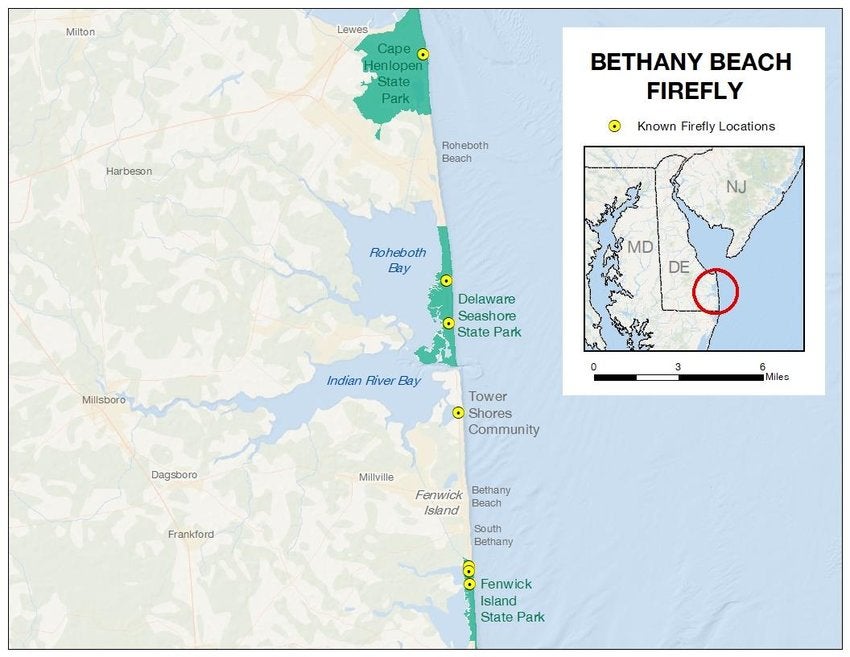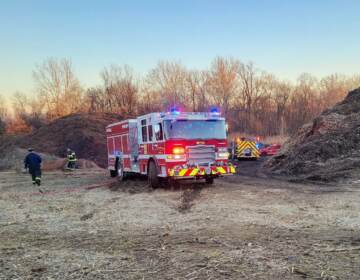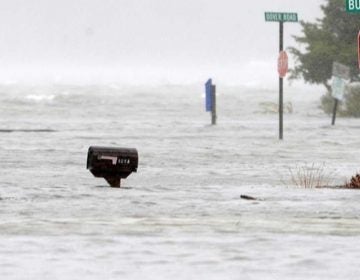Rare Delaware Bethany Beach firefly approaches endangered species list
The U.S. Fish and Wildlife Service is considering adding the firefly with an extremely small habitat to the list of endangered species.

The U.S. Fish and Wildlife Service is considering adding the Bethany Beach firefly to the list of endangered species. (courtesy Christopher M. Heckscher, Delaware State)
The Bethany Beach firefly and its distinctive double-green flash may soon join dodo birds, woolly mammoths and dinosaurs on the list of extinct species.
Known to scientists as Photuris bethaniensis, the fireflies are only found in a handful of locations along Delaware’s southern coastline.
“Their habitat ranges are narrow,” said Tara Cornelisse, a senior scientist with the Center for Biological Diversity. “It’s specialized in freshwater swales, and those are naturally a not very common ecosystem.” She said that habitat used to be much more common up and down the state’s coast, but as a result of development their numbers are dwindling.

Cornelisse joined several others in filing a petition with the U.S. Fish and Wildlife Service to protect the firefly under the Endangered Species Act. USFWS agreed that there was enough information about the threats fireflies face to warrant further study. Those threats include light pollution, invasive species, pesticide use and the effects of climate change.
The fireflies play an important role in the area’s food web. “The larvae are carnivorous and they actually eat other organisms, other arthropods usually, they prefer soft-body arthropods like snails, slugs and worms,” she said.
In addition to flashing their lights to attract other Bethany Beach fireflies for mating, the adult females will also use their lights to lure males from other species of fireflies and eat them. “They will eat those males to obtain their defensive toxins, which they can then pass on to their offspring.”
The fireflies are also a good indicator of the health of the freshwater wetlands where they live.
While it’s sometimes hard to get the general public interested in protecting insect species, fireflies can act as ambassadors for their fellow insects. “They’re so effective at connecting humans to nature. Everyone loves fireflies,” Cornelisse said. “I have observed the reactions of people when I have said different types of insects. It’s usually not very positive, but for fireflies, it’s always positive. Everyone just lights up, literally, when they hear about fireflies.”
The USFWS process to consider stronger protection for the Bethany Beach firefly could take a year or longer. Cornelisse hopes that in addition to getting listed as an endangered species, the firefly’s habitat is protected as well. That would require USFWS to evaluate any activity in its habitat to determine if it could put the firefly at further risk of extinction. The service would also create a recovery plan for the species in an effort to boost its numbers.
WHYY is your source for fact-based, in-depth journalism and information. As a nonprofit organization, we rely on financial support from readers like you. Please give today.





